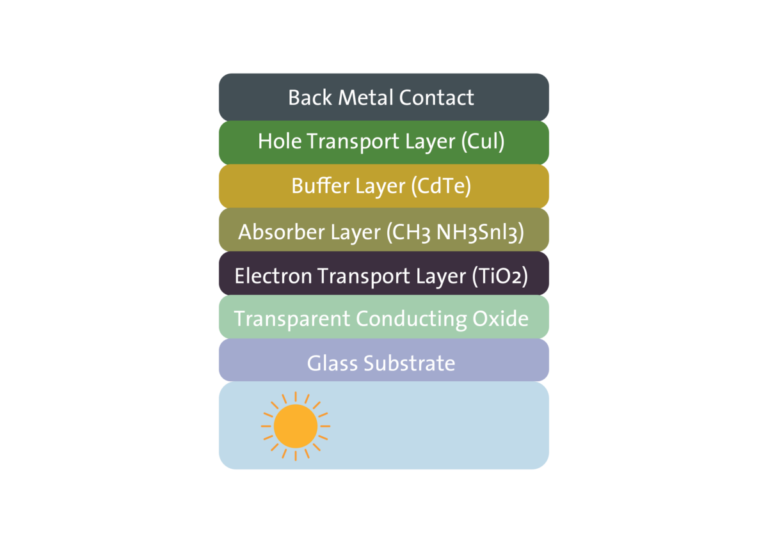An international research team has conducted a series of simulations to investigate how a cadmium telluride buffer layer can help increase the efficiency and stability of perovskite solar cells. Their experiment showed that the cell efficiency can increase from 11.09% to 23.56%.
A group of scientists led by the University of Agriculture Faisalabad in Pakistan has proposed to improve the efficiency of perovskite solar cells by adding a buffer layer (BL) made of cadmium telluride (CdTe), which reportedly improves charge carrier extraction while reducing device defects . .
The researchers explained that the presence of a BL in a perovskite cell provides a porous structure that helps form the upper hole-transporting layer (HTL), while also preventing the leakage of corrosive additives from the HTL material. “The improvement in HTM layer development not only promotes efficient hole transfer and conduction, but also limits charge recombination,” they explained.
The choice of CdTe was due to the hypotheses that the hydrophobic nature of CdTe could protect the absorber against moisture and corrosion, and that its high UV resistance could minimize UV-induced degradation, thereby improving cell stability.
The scientists used the SCAPS-1D solar cell capacity software, developed by Ghent University, to simulate the new cell configuration. The device was based on a substrate of glass, a transparent conductive oxide (TCO), an electron transport layer (ETL) made of titanium oxide (TiO2)an absorber made from a perovskite material known as CH3NH3SnI3the CdTe buffer layer, an HTL made of copper(I) iodide (Cul) and metal contacts on the back.
The performance of this device was simulated under standard lighting conditions and compared to that of a reference device without a buffer layer. The CdTe-based cell achieved an energy conversion efficiency of 14.76%, an open-circuit voltage of 0.83 V and a short-circuit current density of 25.96 mA/cm2and a fill factor of 68.42%. The benchmark device achieved an efficiency of 11.09%, an open-circuit voltage of 0.69 V and a short-circuit current density of 26.22 mA/cm2and a fill factor of 61.46%.
By further refining the thickness of the buffer layer and improving the material composition of the perovskite absorber and the ETL, the scientists were able to significantly improve cell efficiency during the simulation. “These optimized device parameters showed significant improvement in device performance with the CdTe layer on CuI/CH3NH3SnI3 interface, resulting in an efficiency of 23.56% compared to 11.09% without the BL,” they explained.
The new cell design was introduced in the study “Interface engineering for enhanced performance of perovskite solar cells using CdTe buffer layer”, which was recently published in Results in technology. “The findings demonstrate that the incorporation of CdTe significantly improves the energy conversion efficiency of the nip device,” the group concluded.
The research team also included scientists from the University College of London, United Kingdom and the National University of Malaysia.
This content is copyrighted and may not be reused. If you would like to collaborate with us and reuse some of our content, please contact: editors@pv-magazine.com.


